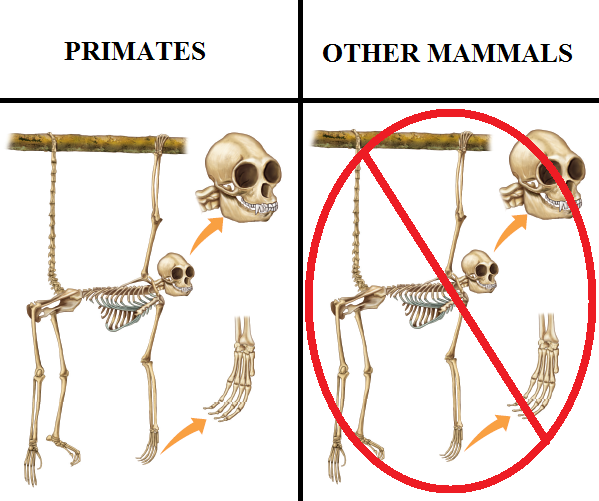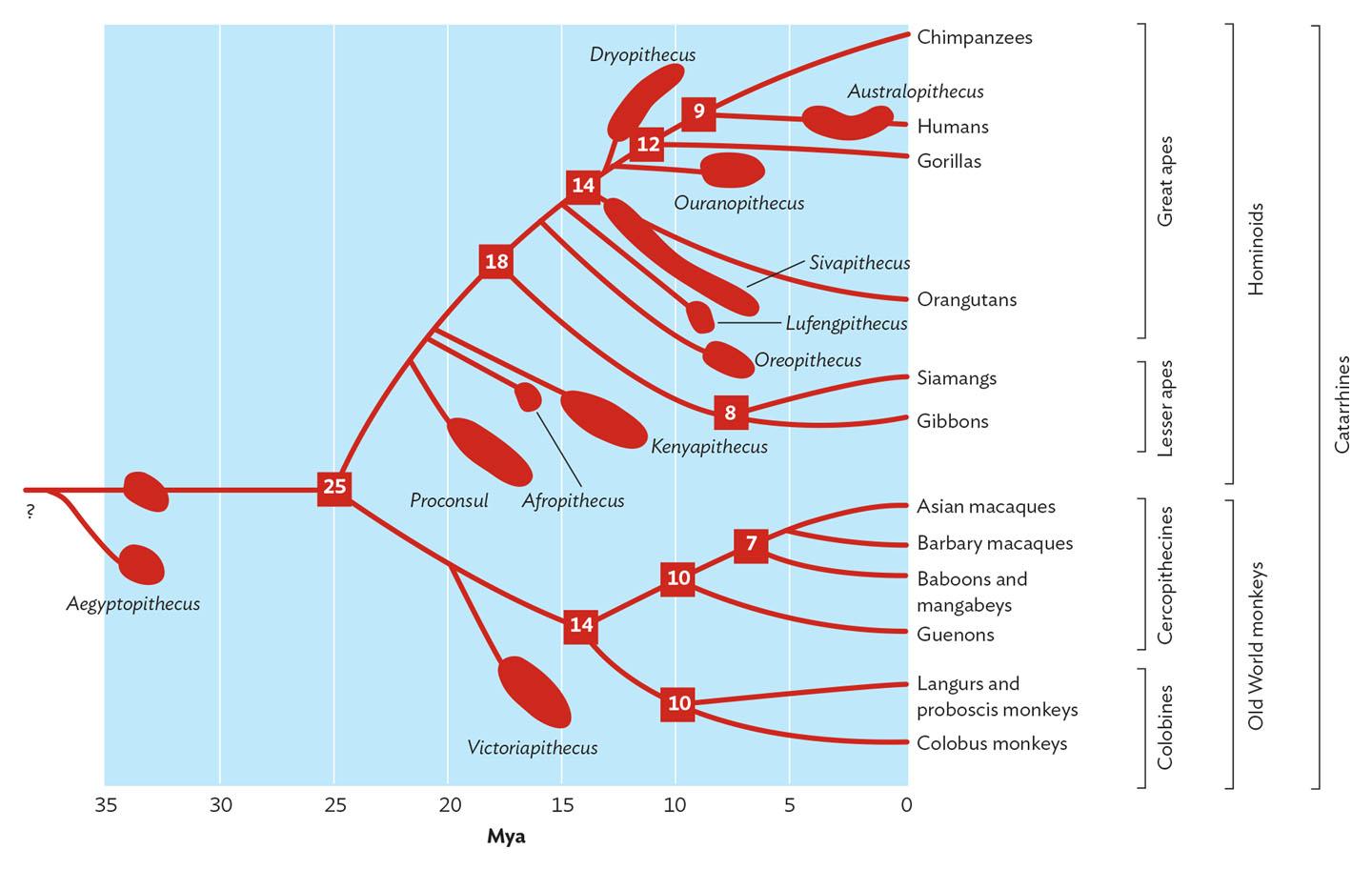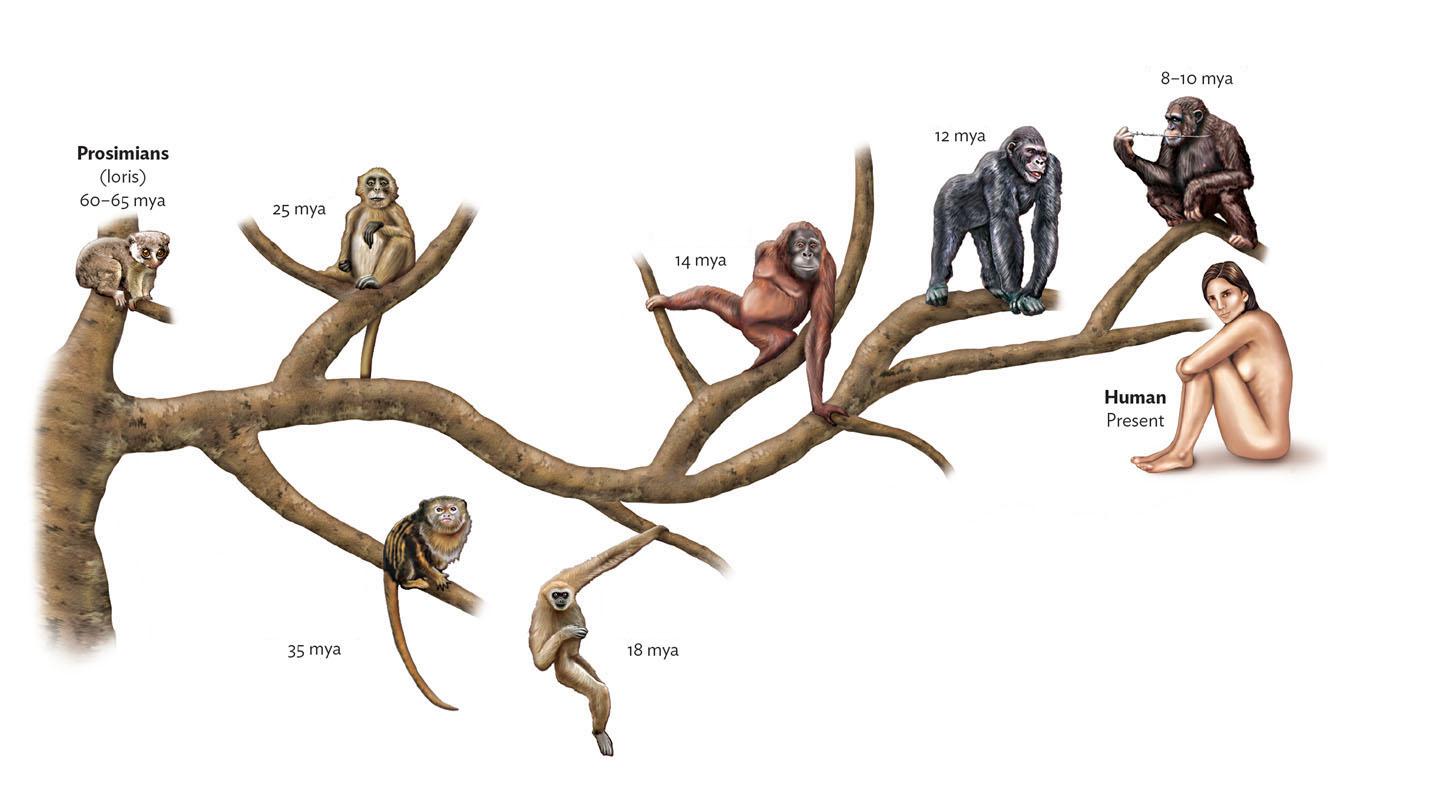Match Each Taxonomic Group of Fossil Apes to Its Description.
The orangutans come out at the subfamily level leaving the African great apes in the subfamily Homininae. However as exemplified by the analysis of the extinct hominin Australopithecus the various characters identified as potentially synapomorphic for either crown hominoids or hominids offer the prospect of refining the phylogenetic placement of fossil apes for which their stem vs.

Chapter 9 Inquzitive Quiz Flashcards Chegg Com
Thus a node exists in each point where a group of organisms divides or separate into further different groups.

. Panzee linea ge Pan at some point between. Crown hominoid status is controversialas these features can be easily scored from. They were medium-sized with a tiny brain adaptations for arm swinging and teeth that were highly specialized for eating leaves.
They were medium-sized with a tiny brain adaptations for arm swinging and teeth that were highly specialized for eating. Am J Phys Anthropol 71265284. Human taxonomy on one hand involves the placement of humans within the taxonomy of the hominids great apes and on the other the division of archaic and modern humans into species and if applicable subspeciesModern zoological taxonomy was developed by Carl Linnaeus during the 1730s to 1750s.
Each question is worth one point. Ardipithecus ARA-VP-6500 Nacholapithecus KNM-BG35250 Pierolapithecus IPS21350 Hispanopithecus IPS18800. This was a group of Miocene apes that was found in Europe.
This was a group of Miocene apes that was found in Europe. The lesser apes ie. It is now understood that while there were considerable anatomical differences between the early hominins they also shared a number of important traits.
A new taxonomic revision of the small catar- fossil apes. Dissertation New York University. Hence to refer to the grou p of African apes and humans one could say.
This was a group of early Miocene apes that. Genetic inheritance due to common ancestry is called. Tarsier also from Southeast Asia show some prosimian-like and some anthropoid-like features.
Rhine primates from the Early Miocene of East Africa. Clades are groups of organisms or genes that include the most recent common ancestor of all of its members and all of the descendants of that most recent common ancestor. He named the human species as Homo sapiens in 1758 as the only.
The Order Primates is divided into two groups. Cations for understanding patterns of variation in species of Harrison T. Inins have been heavily debated.
Approximate age in millions of years ago is given to representative fossils of each extinct genus. Dental variation in African apes with impli- Oreopithecidae. All fossil great apes included thecus differs from hylobatids and resembles extant in the analysis except for Sivapithecus and Dryopithe- great apes by its relatively high face albeit less so than cus are classified as orangutans Table 6 and cluster in African apes differing from chimpanzees by its inter- with this taxon Fig.
This paper begins by reviewing the fossil evidence for human evolution. Other fossil apes exhibit primitive monkey-like pronograde body plans with somewhat more modern ape-like forelimbs eg Nacholapithecus. This was a group of early Miocene apes that was found in Europe.
It presents summaries of each of the taxa recognized in a relatively speciose hominin taxonomy. By 3 million years ago most of them probably were nearly as efficient at bipedal locomotion as humans. Diverged from apes specifically the chim-.
The term for physical shape and size of an organism or its body parts is its. Wings on birds and bats are an example of A. Either the Hominina e or the hominines.
Like people but unlike apes the bones of their pelvis or hip region were shortened from top to bottom and bowl-shaped. The genus and spec ies names common ly called the scientif ic. Match each taxonomic group of fossil apes to its description.
Match each taxonomic group of fossil apes to its description. Which of the following genera did propliopithecids include. They were medium-sized with a tiny brain adaptations for arm swinging and teeth that were highly specialized for eating leaves.
Match each taxonomic group of fossil apes to its description oreopithecids - This was a group of Miocene apes that was found in Europe. This was a group of Miocene apes that was found in Europe. The gibbons and siamangs of Southeast Asia are still separated into their own family the Hylobatidae.
These taxa are grouped in grades namely possible and probable hominins archaic hominins megadont archaic hominins transitional hominins pre-modern Homo and. A cladogram can be simple comparing. They were larger than earlier apes with larger brains adaptations for arm swinging sharp canines and cheek teeth adapted for chewing fruit.
10B albeit they are neither far mediate NMH but. Match each taxonomic group of fossil apes to its description. Anthropoids include monkeys apes and humans.
Match each taxonomic group of fossil apes to its description -Dryopithecids. A clade is made up of an ancestor and all its descendants. Prosimians include the bush babies and pottos of Africa the lemurs of Madagascar and the lorises of Southeast Asia.
Graphic origins of the human lineage ho m-. 93 million and. A cladogram is a diagram used to represent a hypothetical relationship between groups of animals called a phylogenyA cladogram is used by a scientist studying phylogenetic systematics to visualize the groups of organisms being compared how they are related and their most common ancestors.
Darwins great insight and the unifying principle of biology today is that all species are related to one another like sisters cousins and distant kin in a vast family tree of life. They were medium-sized with a tiny brain adaptations for arm swinging and teeth that were highly specialized for eating leaves. All of the great apes are now in the family Hominidae formerly our exclusive domain.
Which of the following genera did propliopithecids include.

Anth 102 Chapter 9 Primate Origins And Evolution Flashcards Chegg Com

Anth 102 Chapter 10 Early Hominin Origins And Evolution The Roots Of Humanity Flashcards Chegg Com

Anth 102 Chapter 9 Primate Origins And Evolution Flashcards Chegg Com
No comments for "Match Each Taxonomic Group of Fossil Apes to Its Description."
Post a Comment